This is the first post in a series. You can find links to all the others by scrolling down to the bottom of the page — below the comments — and looking at the pingbacks.
Almost two years ago, I created a long series of posts looking at depth of field (DOF) using modulation transfer functions as metrics rather than the convention circles of confusion (CoCs). This allowed lens aberrations, diffraction, and output resolution to be taken into account, something that if difficult to impossible using conventional techniques.
There were four problems:
- MTF measures in general, and MTF50 in particular, are not well understood by a large segment of the photographic community.
- The mathematics required to calculate the MTF50 results was complex and slow if approximations were avoided, and rife with heuristics if they were not.
- Because of the above, it was not practical for me to provide the tools that I was using to the photographic community at large
- The results showed the results of decisions about lens selection, f-stop choice, and focused distance settings, but offered no guidance on how to optimize those things.
Especially among medium format (MF) users the issues of managing depth of field and diffraction blur for landscape photography come up a lot, so I decided to take another crack at the problem, the the objective of solving the four issues above.
Some caveats:
- Sharpness is not the most important thing in photography. Even for landscape photographs in which Group f.64 levels of sharpness are desired, the success of the picture is usually far more dependent on other things.
- Sharpness is not binary. One person’s “razor sharp” is another person’s “a bit soft”. Thinking of sharpness as binary can lead to bad decisions and Internet acrimony.
- There is a hazy, indistinct threshold between “sharp enough” and “not sharp enough” that varies with photographer, subject, and print size.
Some observations:
- With modern lenses and modern FF and MF cameras, landscape photograph sharpness is often limited by diffraction and DOF, rather than by lens quality or sensor resolution, This is especially true near the center of the captured image.
- Maximizing DOF increases diffraction, and vice versa.
- Getting the right amount of sharpness in the right parts of the capture is a matter of blur management, and is not always easy, even for experienced photographers.
I decided to start by looking at sensor blur circle size as a function of f-stop and object distance. First I looked at what happens with an ideal 60mm lens — one with no aberrations and no diffusion — focused at 30 meters. I assumed a sensor with a pixel pitch of 5.3 micrometers (um), like the Fujifilm GFX 50S and 50R. I assumed a fill factor of 100%.
Under those assumptions, the subject blur circle at 30 meters is independent of f-stop, and is equal to the sensor pitch. Stopping down increases sharpness at all other distances.
Next I added the amount of diffraction that you get with green (555 nanometer) light, and changed the fill factor to 70%, which approximates that of the GFX 50S and 50R.
Now, stopping down makes the images less sharp at the focal point and sharper a considerable distance away from that.
If we focus a great distance away, we get this:
Longer focal lengths mean less DOF:
When looking at these curves, it is difficult to see the sharpness effects when the blur circles are small. We can compute a new metric by making the vertical axis the ratio of the sensor height over the blur circle diameter, so it becomes the number of blur circles per sensor height:
The number of blur circles per picture height is roughly comparable to MTF50 in lines/ph, or twice MTF50 in cycles/ph. Anything below 2000 or so is visibly soft. Anything below 1000 or so is quite soft.
I could go ahead and add in lens aberration blur, but that is problematical for many reasons:
- It would be difficult for people to understand the aberration blur that their particular lenses introduce.
- Lens aberration blur varies across the frame, sometimes wildly.
- At the lenses that most people use for most landscapes, lens aberration blur is less important than diffraction or DOF.
With that work under our belt, I’ll look at optimizing f-stop and focused distance in the next post.
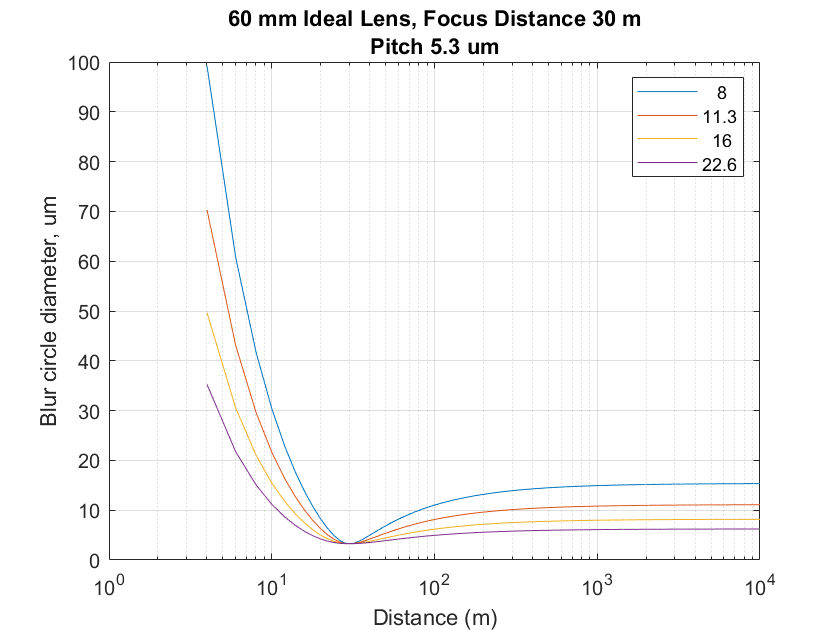
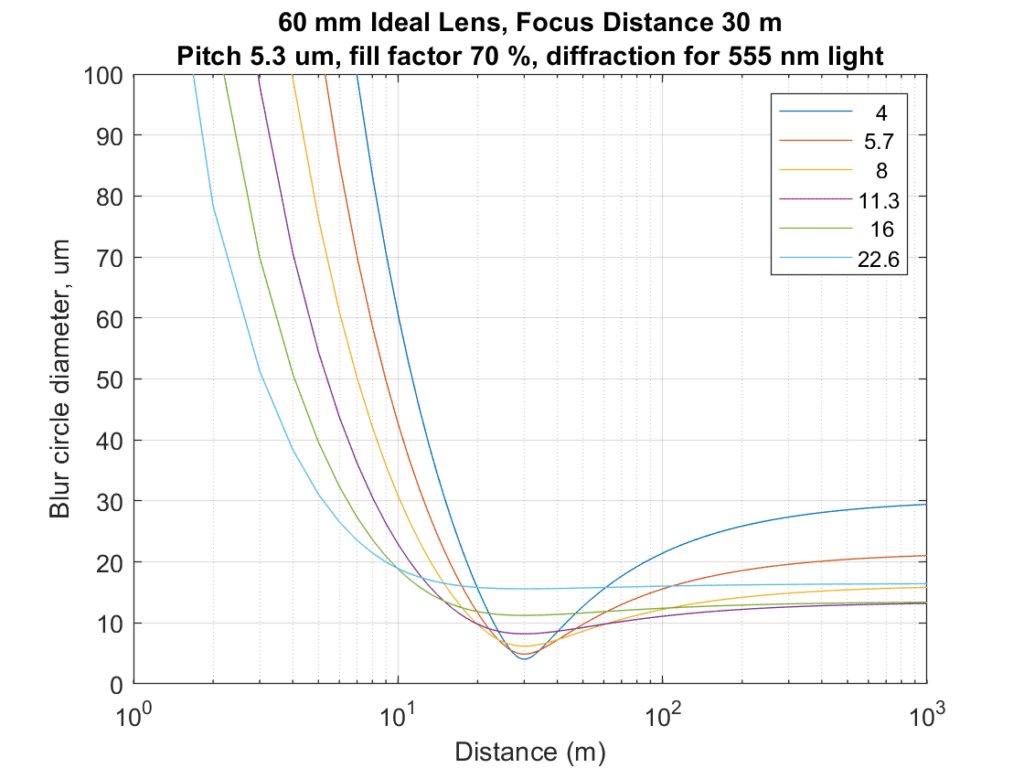
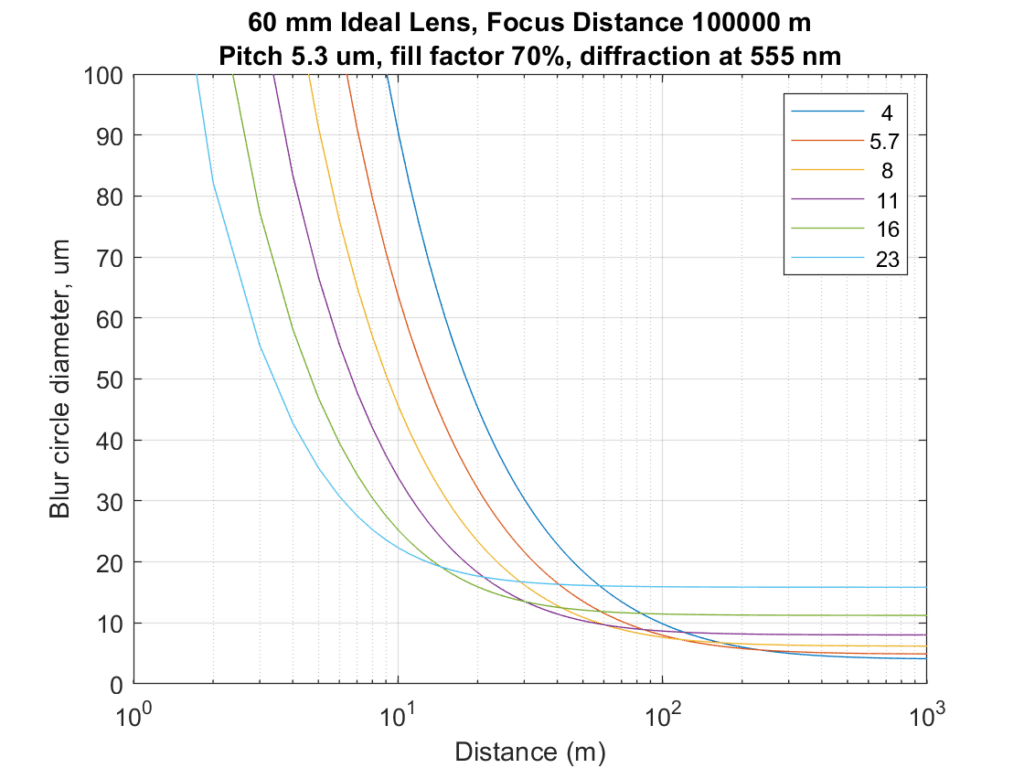
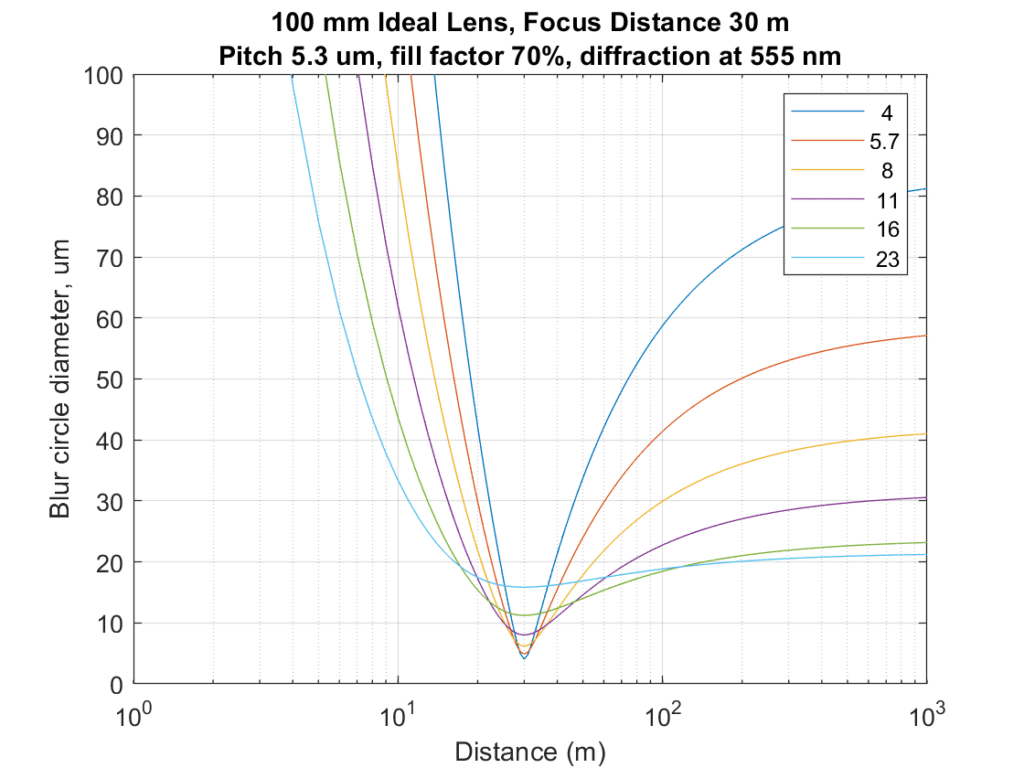
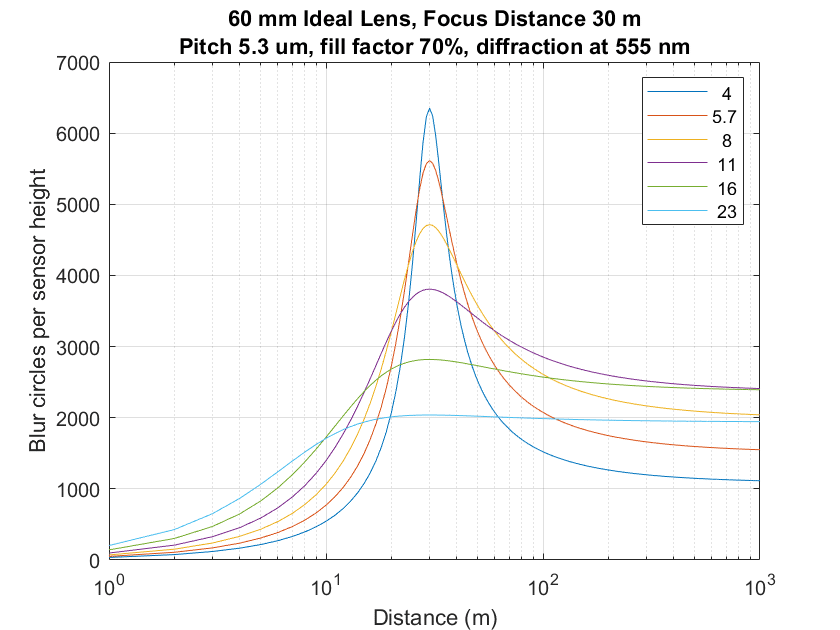
One wrench that gets thrown into all these calculations when real-world lenses come into play is field curvature (and astigmatism).
And for most modern lenses, the lack of a usefully precise focus scale.
If you’ve used a rangefinder to measure your subject distances, you can use it to find something that’s near to the recommended distance, and focus on that. And yes, for some lenses, field curvature needs to be considered.
Jim,
Thank you for this excellent post. If a simple answer would suffice, I would be interested in how you calculate the blur circle for diffraction+defocus (COF).
I sometimes use the OptimumCS-Pro ap by George Douvos. That ap assumes that the two blur circles add in quadrature, but some online experts have challenged that.
Bill
I’m all for adding in quadrature — as an approximation — but you should use the 70% Encircled Energy radius for the diffraction solid.
https://blog.kasson.com/the-last-word/blur-circle-size-estimation-with-encircled-energy/